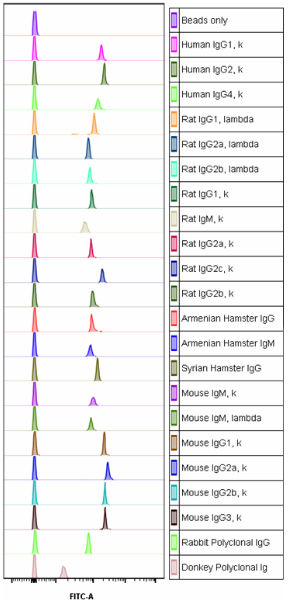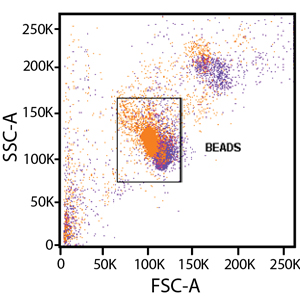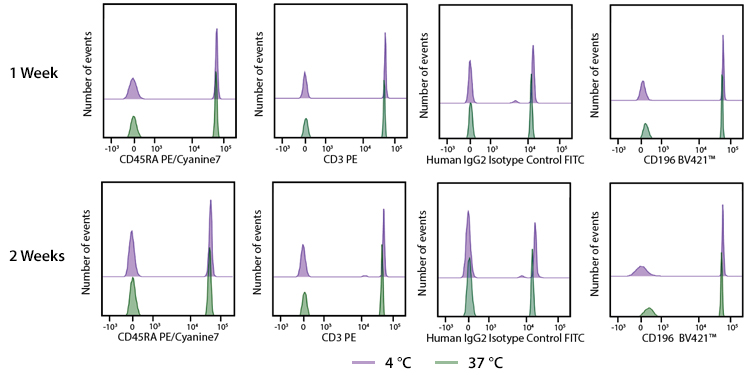Compensation Beads (Cat. Nos. 424601, 424602) contain small, synthetic particles capable of binding fluorescently conjugated antibodies. These beads are mixed with inert, non-antibody binding beads. This allows researchers to generate artificial positive and negative fluorescence populations that mimic the heterogeneous populations of cells in a sample that are negative or positive for a given marker. Compensation beads are also used for setting flow cytometer compensation and voltage values. On full spectral flow instruments, they are used to set spectral unmixing parameters.
They can be advantageous to use over biological samples in certain conditions:
- If there is a known/expected staining outcome, parameter setting with standardized reagents (e.g. compensation beads) can be done. The staining presence/intensity would not be subject to sample variability (e.g. donor variation and variable marker expression).
- If you have precious or rare samples, compensation beads can be used instead so you don't have to choose whether to use your samples for instrument setup or data analysis. This is particularly valuable for those setting up large flow cytometry panels that require optimization.
- In some panels, the antigen targets of some antibodies may be expressed at low levels, making it difficult to obtain concrete positive/negative populations. Compensation beads are an excellent alternative in this scenario.
 Login / Register
Login / Register 












Follow Us